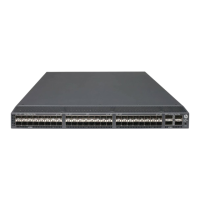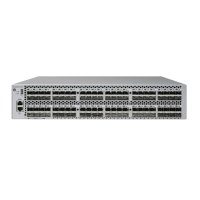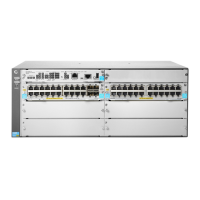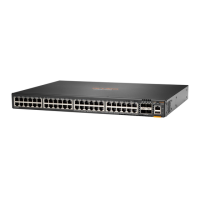22
IP addressing commands
The IP addresses in this chapter refer to IPv4 addresses unless otherwise specified.
The term "interface" in this chapter collectively refers to Layer 3 interfaces, including VLAN
interfaces and Layer 3 Ethernet interfaces. You can set an Ethernet port as a Layer 3 interface by
using the port link-mode route command (see Layer 2—LAN Switching Configuration Guide).
display ip interface
Use display ip interface to display IP configuration and statistics for the specified Layer 3 interface
or all Layer 3 interfaces.
Syntax
display ip interface [ interface-type interface-number ]
Views
Any view
Predefined user roles
network-admin
network-operator
Parameters
interface-type interface-number: Specifies an interface by its type and number.
Usage guidelines
Use the display ip interface command to display IP configuration and statistics for the specified
Layer 3 interface. The statistics include the following information:
The number of unicast packets, bytes, and multicast packets the interface has sent and
received.
The number of TTL-invalid packets and ICMP packets the interface has received.
The packet statistics helps you locate a possible attack on the network.
If you do not specify an interface, the command displays information about all Layer 3 interfaces.
Examples
# Display IP configuration and statistics for VLAN-interface 10.
<Sysname> display ip interface vlan-interface 10
Vlan-interface10 current state : DOWN
Line protocol current state : DOWN
Internet Address is 1.1.1.1/8 Primary
Broadcast address : 1.255.255.255
The Maximum Transmit Unit : 1500 bytes
input packets : 0, bytes : 0, multicasts : 0
output packets : 0, bytes : 0, multicasts : 0
TTL invalid packet number: 0
ICMP packet input number: 0
Echo reply: 0
Unreachable: 0
Source quench: 0

